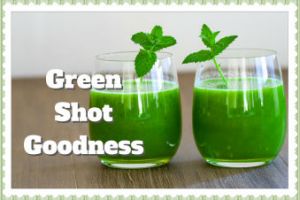
If you’ve ever visited a juice bar, you are probably familiar with wheatgrass shots. These potent green beverages are advertised as the pinnacle of health, and have become so popular that many people line up to take a shot during their lunch break for a nutritious pick-me-up.
While wheatgrass does have many notable health benefits, getting yours from a juice bar is probably not the ideal way to go. Unless the shots are entirely organic, the grass itself may have been grown with the use of pesticides, and some establishments may use additives in preparing the shots. Luckily, growing your own wheatgrass and making your own shots is very simple.
Wheatgrass is sprouted from whole kernel wheat seeds, also known as wheat berries. Although it grows from wheat seeds, it does not contain gluten. However, since wheat is often grown with a multitude of pesticides and herbicides, it is highly important to go organic when choosing your seeds.
One of the primary benefits of wheatgrass is its high chlorophyll content. Chlorophyll, the pigment which is responsible for the vibrant green color of many grasses, plants and algaes, is very close in molecular composition to human red blood cells. It has a multitude of benefits to the circulatory system, increasing oxygen delivered to the cells and boosting nutrient absorption.
Chlorophyll is also associated with liver purification and can be very valuable as a detox aid, as it has been linked to cleansing the digestive system and pancreas. It also contains an array of antioxidants, and can help to decrease system-wide inflammation, which if left unchecked can lead to a host of chronic illnesses.
On top of that, wheatgrass provides vitamins A and C, along with several B-vitamins. The most prevalent B-vitamin in this grass is pantothenic acid (vitamin B5), which plays an important role in red blood cell and hormone production. Wheatgrass also contains an array of minerals, including heart-healthy magnesium and potassium.
Aside from detoxifying the body, consuming wheatgrass has been linked to lowering blood pressure, stimulating the metabolism, improving digestion, creating an alkaline environment in the body and freshening breath. It has also traditionally been applied externally to soothe itching and sunburn.
The most important thing to remember when it comes to wheatgrass is that the health benefits depend largely on the quality of the seed, and the quality of the soil in which it is grown. For this reason, choose organic seeds if you are growing your own. If you are purchasing mature grass, make sure that it has been grown organically.
Growing your own wheatgrass requires only a modest-sized container, some quality soil, indirect sunlight, and low humidity. Whether you grow or purchase your wheatgrass, make sure that the base of the grass does not get moldy, as this can cause digestive disturbance if ingested.
 To make your own wheatgrass shots, simply cut the grass, rinse it thoroughly, and toss it in the juicer. Drink right away, within about 15 minutes of preparation, to maintain maximum nutrient content.
To make your own wheatgrass shots, simply cut the grass, rinse it thoroughly, and toss it in the juicer. Drink right away, within about 15 minutes of preparation, to maintain maximum nutrient content.
As it has a strong flavor that some people find unpleasant, you may choose to mix it with other greens and fruits. Make sure to start slow, with around one ounce a day, working up to two or three ounces, as too much all at once may trigger a detox reaction in some individuals.
Note: Wheatgrass is a potent medicinal plant, and is more for occasional detoxification than everyday use. To determine how much wheatgrass, and how often, is optimal for your individual health needs, talk to a natural health professional.
-The Alternative Daily
Sources:
http://hippocratesinst.org/wheatgrass
http://www.youngandraw.com/chlorophyll-get-more-blood-building-foods-into-your-diet
http://www.livestrong.com/article/92539-wheatgrass-nutrition
http://www.rawfoods-livingfoods.com/wheat-grass-juice.html

